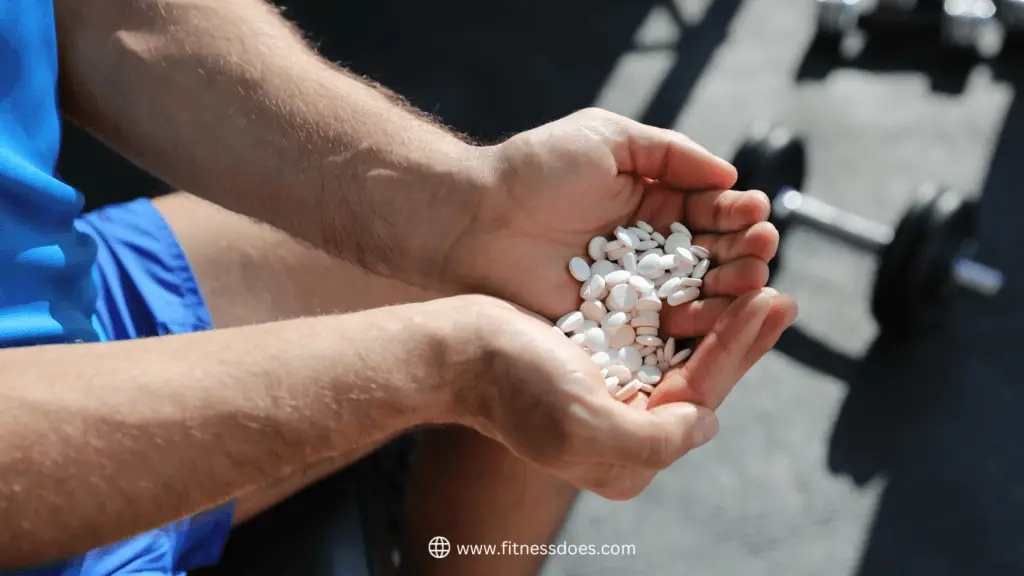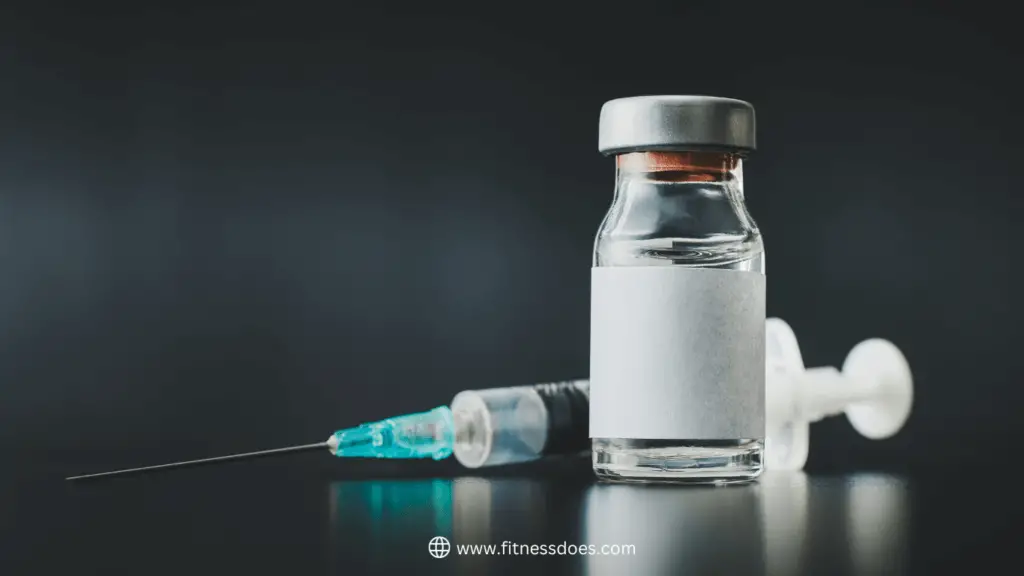CrossFit is an icon of human power, stamina, and commitment to physical fitness. CrossFit competitors push themselves to their limits during intense workouts and see remarkable improvements. The athletes of CrossFit inspire awe and respect, yet the question “Are CrossFit athletes on steroids?” remains.
This investigation intends to dig into this exciting issue, analyzing the narrow line between greatness and performance-enhancing chemicals while looking at the perceptions, the truth, and the variables surrounding the CrossFit culture.

Are CrossFit athletes on steroids?
CrossFit raises concerns about steroid usage because of its intensity and apparent effects. CrossFit routines are infamously demanding, and as a result, CrossFit athletes have sculpted incredible bodies. The steroid controversy stems from the age-old “too good to be true” problem, which isn’t unique to CrossFit.
Use of Steroids Suspect
While most Crossfitters support drug-free competition, steroid usage has been documented in the community. Among the Crossfit Games competitors who have been banned since 2017, Ricky Garard stands out.
A steroid metabolite and a selective androgen receptor modulator (SARM) were among the illegal chemicals discovered in Garard’s system. He was disqualified from the competition and banned from Crossfit for four years.
Several other CrossFit Games competitors have been banned for the same reason. These incidents are a sobering reminder that steroid usage, however infrequent, is present among CrossFit athletes.
Media’s Pervasive Impact
The media’s depictions have contributed to this at times. It’s easy to assume that CrossFit competitors use PEDs after seeing their chiseled bodies on magazine covers, social media, and films. Based on this image, it’s hard to imagine that these people accomplished so much on their own.
Problems with Steroids
We must proceed cautiously as we explore the sensitive topic of steroid usage in CrossFit. The narrative has many layers that deserve our consideration and compassion, set in a society where performance enhancement is appealing and prohibited.
Taking Wonder in Superhuman Achievements
Complex exercises like snatches, deadlifts, muscle-ups, and handstand walks are commonplace in CrossFit “WODs” (Workouts of the Day). These kinds of accomplishments look quite incredible to the inexperienced eye. This assumption supports the theory that some CrossFit competitors seek chemical enhancement.
The Race for the Championship
Because of their “Fittest on Earth” title, CrossFit Games winners are under even more intense scrutiny. Athletes who earn this distinction are elevated to prominence that, despite stringent anti-doping efforts, can be a source of temptation.
The Extreme Pressure to Succeed
CrossFit started as a grassroots movement but has since evolved into a billion-dollar business. The stakes are high, as success results in substantial financial rewards, such as endorsement deals and sponsorships. The higher the stakes, the greater the suspicion that athletes may resort to cheating.
Keeping Myths and Facts in Check
Steroid usage is not a hypothetical problem in CrossFit. It is essential, however, to separate fact from fiction. In sports, as in life, oversimplification merely hides the situation’s complexity.
Strict Measures Against Doping
CrossFit is known for its constant vigilance against doping. Organizational anti-doping policies demonstrate the group’s commitment to defending the honor of sports. The World Anti-Doping Agency (WADA) enforces strict anti-doping policies, including the widespread use of random drug testing of athletes.
The Good Majority
It’s unfair to generalize about CrossFit athletes as a whole. Most are incredibly dedicated professionals who have reached the pinnacle of their field via years of hard work, study, and moral fortitude.
Unforeseen Effects
The personal and professional repercussions of false accusations and suspicions are substantial. Several CrossFit athletes have taken the heat for no good reason. The impact on players and the integrity of the game as a whole is devastating.
Put It In Context
One must look at the bigger picture to get a complete picture of steroid use in CrossFit. CrossFit is just a mirror of the competitive world of sports in terms of the challenges and temptations experienced by athletes in their quest for perfection.
The Continuity of History
There has always been a story about athletes cheating by taking drugs to improve their performance. The use of performance-enhancing drugs has long been a dark cloud over sports, from the ancient Olympics to today’s sporting competitions.
The Truth About CrossFit Drug Testing

Drug Testing: A Look at the Fact
The CrossFit Anti-Doping Program was established to keep everyone on the same playing field. Suspensions from competition are one of the harsh consequences of doping. The existence of this program demonstrates CrossFit’s dedication to fair play.
CrossFit’s Normative Anti-Doping Policy
CrossFit has not chosen to ignore these concerns. The CrossFit Anti-Doping Program has been created to ensure the fairness of the sport. All participants will be subject to random drug testing, and those who fail will face severe consequences.
Innovations in Drug Testing
More accurate and severe standards have resulted from developments in drug testing. Ironically, these breakthroughs have also created new, harder-to-detect PEDs. When athletes are focused on winning, they can often outsmart testers.
Proven Cases
The fact is that CrossFit has seen some investigated cases. Some prominent athletes have been banned from competition after failing drug tests. These incidents are a sobering reminder that, like in any sport, there are always those who prefer to cut corners. However, it is crucial that these particular incidents not be extrapolated to the whole CrossFit population.
Moral Conundrums
Athletes aren’t the only ones who face moral difficulties with doping; coaches, sponsors, and leagues also do. Doping incidents in many sports highlight how difficult it may be to keep competition clean.
The Purposes of Anabolic Steroids in Athletics.
Some examples of motivations for steroid usage include:
- The most blatant is obviously to beat the competitors. Using steroids may give an athlete a competitive edge in activities that require enhanced muscular bulk and strength.
- Some studies have suggested that steroid use can increase stamina and recovery time, which could be useful in Crossfit’s high-volume, constantly changing environment.
- Last but not least, some people use steroids only for aesthetic reasons, to make themselves appear larger and more muscular.
Consequences of Using Legal Steroids
There are some possible concerns with using legal steroids, even though they are typically safe when taken as advised. Legal anabolic steroids, for instance, have been linked to hypertension and disruptions in hormone balance.
Furthermore, some individuals have hypersensitivity to legal steroids or other components. Discuss the benefits and hazards of using legal steroids with your physician before beginning treatment.
The Influencing Variables
Genetics
CrossFit competitors have a biological advantage that helps them perform significantly. They often benefit from body types well-suited to the wide range of CrossFit activities. Muscle mass, cardiovascular endurance, and athletic potential are all factors that can be affected by genetics.
Strenuous Practice
CrossFit competitors’ amazing bodies are a direct result of their rigorous training. Consistent weight training, HIIT, and bodyweight workouts often lead to excellent muscular growth and a lean physique.
Nutrition
To reach your fitness goals, your diet plays a crucial part. CrossFit competitors are very particular about eating to maximize their performance and recovery. Muscle development and overall body composition can benefit significantly from a well-balanced diet.
Methods of Assistance
A strong community is essential for many successful CrossFit competitors. They have the support of coaches, dietitians, physiotherapists, and others who work to improve their performance. Having a group of people who have your back might be a game-changer when it comes to success.
Balance Point
Do CrossFit athletes use performance-enhancing drugs? It’s a complicated answer. Although there have been incidences of doping in the sport, generalizing that all CrossFit athletes are dope is neither reasonable nor genuine. It is critical to have a deeper comprehension of the underlying dynamics at play.
Strive for Perfection
CrossFit competitors are dedicated to nothing less than reaching their full potential. They put unrivaled effort into training, eating, and resting. Most of these athletes’ extraordinary physical abilities are not the result of using performance-enhancing drugs. Their success is a tribute to the power of the human spirit, self-control, and diligent effort.
The Value of Keeping Things in Perspective
Taking a nuanced view of the steroid use debate in CrossFit is crucial. An athlete’s remarkable devotion and effort should be celebrated, not questioned. Some group members may have experimented with doping, but this does not indicate the norm.
Conclusion
Are CrossFit Athletes On Steroids? Athletes in the CrossFit community push themselves to their physical and mental limitations, shatter stereotypes, and reimagine what is possible in fitness. The issue of steroid usage in CrossFit is nuanced and complex to pin down. It’s unfair to label all CrossFit competitors as dopers because some have been caught with performance-enhancing substances.
The Anti-Doping Program, the athletes’ genetics, the intensity of their training, the quality of their diet, and the strength of their support networks are all crucial factors in the success of CrossFit competitors. Their physiques are an inspiration and a tribute to human potential, self-control, and dedication. The CrossFit community is built on a foundation of devotion, ability, and drive, and it would be a mistake to assume otherwise.
